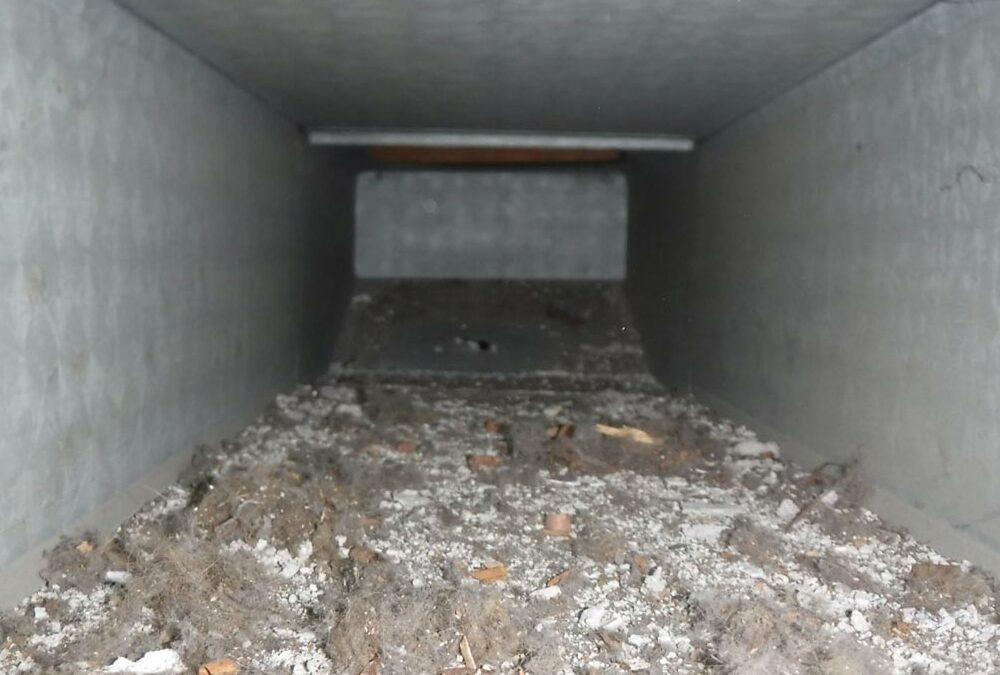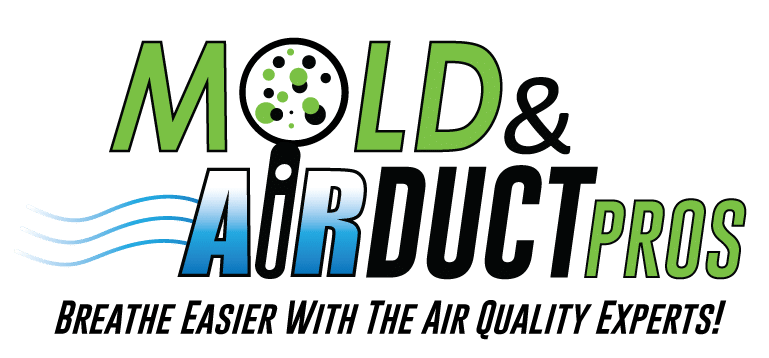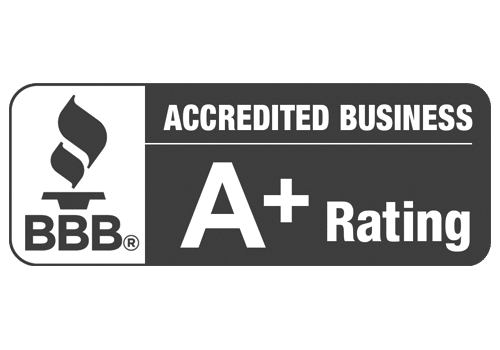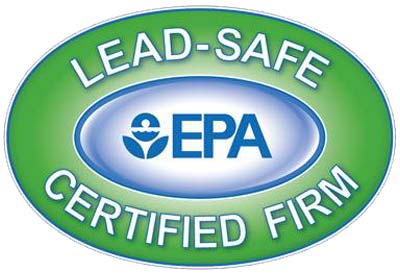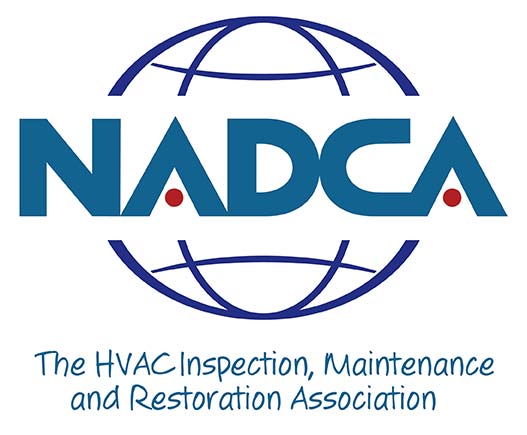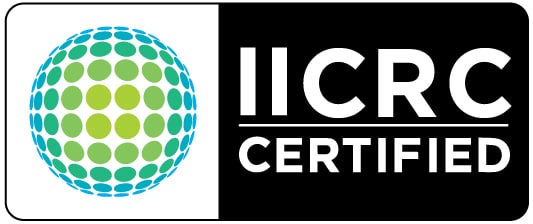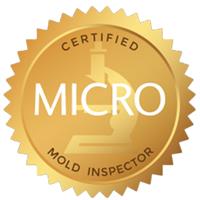Do you actually need to clean your air ducts? In the never-ending list of tasks a homeowner faces, this is one that may fall off the radar. It’s invisible and oh-so easy to ignore. How important can it be, really? The short answer: very. Let’s dive into the whys and hows of air duct cleaning, and get you and your family breathing easier.
Table of Contents
Understanding Indoor Air Quality
Several factors influence the air in our homes. Common pollutants include dust, allergens, and pet dander, all of which can significantly impact respiratory health. Household activities can also add to the problem. Cooking emits airborne particles, and cleaning products release chemicals into the environment.
Beyond these, biological contaminants such as mold and bacteria may find their way into indoor air, posing potential (and potentially serious) health risks. Volatile organic compounds (VOCs) emitted by certain household products and furnishings can further compromise air quality.
Now, let’s focus on the unsung heroes of our indoor air quality – the air ducts. They transport the air from your heating, ventilation, and air conditioning (HVAC) system to different rooms. They also facilitate the exchange of indoor and outdoor air. This continuous exchange helps remove stale air, odors, and indoor pollutants. Many HVAC systems also incorporate air filters into the ductwork, which capture dust, allergens, and other particles.The resulting clean air makes for a healthier and more pleasant living space.
The Significance of Regular Air Duct Cleaning
Over time, air ducts collect pollutants. And as the ducts become dirty or clogged, they can spread these pollutants throughout your home. Here’s a specific look at what exactly could be building up in your air ducts:
- Everyday Dust and Dirt: The air circulating in our homes naturally carries dust and dirt particles. Over time, these particles settle and accumulate within the ductwork.
- Pet Hair and Dander: Homes with pets can be full of pet hair and dander, which can find their way into the air ducts. 3. Mold and Mildew: Moisture in the air ducts, often due to factors like leaks or high humidity, creates an environment conducive to mold and mildew growth.
- Pollen and Outdoor Allergens: Outdoor air contains pollen and other allergens. When windows and doors are open, these particles can enter the home and settle within the air ducts.
- Insects and Pests: Small insects and pests may find their way into the ductwork, bringing with them dirt, debris, and other potential allergens.
- Particles from Household Activities: Activities like cooking or using certain cleaning products release airborne particles that can enter the air ducts.
The impact of pollutants on health and well-being can be significant, especially when these contaminants circulate through indoor air. Here are some ways your health might be affected by poor indoor air quality:
- Respiratory Issues: Pollutants such as dust, mold spores, and pet dander can trigger or worsen respiratory conditions. For individuals with asthma or allergies, inhaling these particles may lead to symptoms like wheezing, coughing, or shortness of breath.
- Allergies: Allergens present in indoor air, like pollen or mold, can cause allergic reactions. Common symptoms include sneezing, runny or stuffy nose, itchy eyes, and skin rashes.
- Fatigue and Discomfort: Prolonged exposure to poor indoor air quality may contribute to a general sense of fatigue and discomfort. Individuals may experience headaches, dizziness, or a persistent feeling of being unwell.
- Aggravation of Existing Health Conditions: People with pre-existing health conditions, such as respiratory or cardiovascular issues, may find their conditions worsened by exposure to indoor pollutants. It can lead to more frequent or severe health episodes.
- Long-Term Health Concerns: Continued exposure to certain pollutants may pose long-term health risks. Studies suggest a potential link between prolonged exposure to indoor air pollutants and the development of respiratory diseases or cardiovascular issues over time.
4 Signs that your air ducts need cleaning
- You notice a substantial accumulation of dust around your vents or on your furniture despite regular cleaning
- You observe mold growth in or around the duct openings, it indicates a potential contamination issue.
- Unpleasant odors come from the vents, especially when the HVAC system is running.
- There is an increase in allergy or respiratory symptoms among household occupants.
Benefits of regular air duct cleaning
It improves indoor air quality.
We’ve already discussed this, but it’s worth going into again.
Clean air ducts mean less circulation of dust, allergens, and contaminants throughout your home. This is incredibly important in creating an environment that supports better respiratory health. For individuals with allergies or asthma, in particular, the decrease in potential triggers can lead to noticeably fewer symptoms.
Breathing cleaner air enhances the overall well-being of everyone in the household, creating a healthier and more comfortable living space.
It enhances HVAC system efficiency and longevity.
Regular air duct cleaning also provides a boost to the efficiency and longevity of your HVAC (heating, ventilation, and air conditioning) system.
Over time, dust and debris accumulation within the ductwork can obstruct the airflow, forcing the HVAC system to work harder to maintain the desired temperature. This increased strain not only leads to higher energy consumption but also places additional wear and tear on system components.
By keeping the air ducts clean, the HVAC system operates more efficiently, ensuring optimal performance and potentially extending its lifespan.
4 Common Myths about air duct cleaning
- Myth: “If you can’t see visible dust in or around your air ducts, there’s no need for cleaning.”
Fact: Contaminants like dust mites, mold spores, and allergens can be present even when not immediately visible.
2. Myth: “Air Duct cleaning is a DIY task, easily done with household tools.”
Fact: professional expertise and specialized equipment are crucial for a thorough and effective cleaning process.
3. Myth: “Air duct cleaning is necessary only after a home renovation.”
Fact: While renovations can introduce dust and debris into the ductwork, routine cleaning is essential.
4. Myth: “Air filters alone can maintain clean air ducts”
Fact: Filters capture larger particles, but smaller contaminants can still accumulate over time.

Why You Should trust the Pros with this one
Limitations of DIY cleaning methods
While the idea of tackling air duct cleaning as a do-it-yourself project may seem appealing, it’s essential to recognize the limitations of DIY cleaning methods. Homeowners may attempt to clean vents or change filters, but these efforts often fall short in taking care of the entire duct system. DIY methods lack the specialized equipment needed to reach deep within the ductwork, where contaminants may build up. Additionally, improper cleaning techniques or incomplete removal of debris can lead to further issues, including the spread of pollutants throughout the home or damage to the duct system. DIY cleaning may provide a superficial improvement, but it often fails to deliver the thorough and lasting results achieved through professional services.
Advantages of professional air duct cleaning services
Trained technicians bring expertise and specialized equipment designed for comprehensive duct cleaning. High-powered vacuums and agitating brushes effectively remove accumulated dust, debris, and contaminants from all parts of the duct system, ensuring a thorough cleaning process. Professionals also have the knowledge to identify and address potential issues within the ductwork, such as leaks or mold growth. Homeowners can rely on the expertise of trained technicians to deliver quality results, backed by industry standards.
How often should you get your air ducts cleaned?
Generally, experts recommend having air ducts professionally cleaned every three to five years. However, there are some individual factors that may make it a good idea to do more often.
Homes with residents who suffer from allergies or respiratory conditions could benefit from more frequent cleaning.
It’s also a good idea to take into account whether your home has pets, and whether you live in an area with high levels of dust or pollen.
Ultimately, the decision on the frequency of air duct cleaning depends on the specific needs and circumstances of each home. Talk with an air duct pro about what’s right for your home and family.
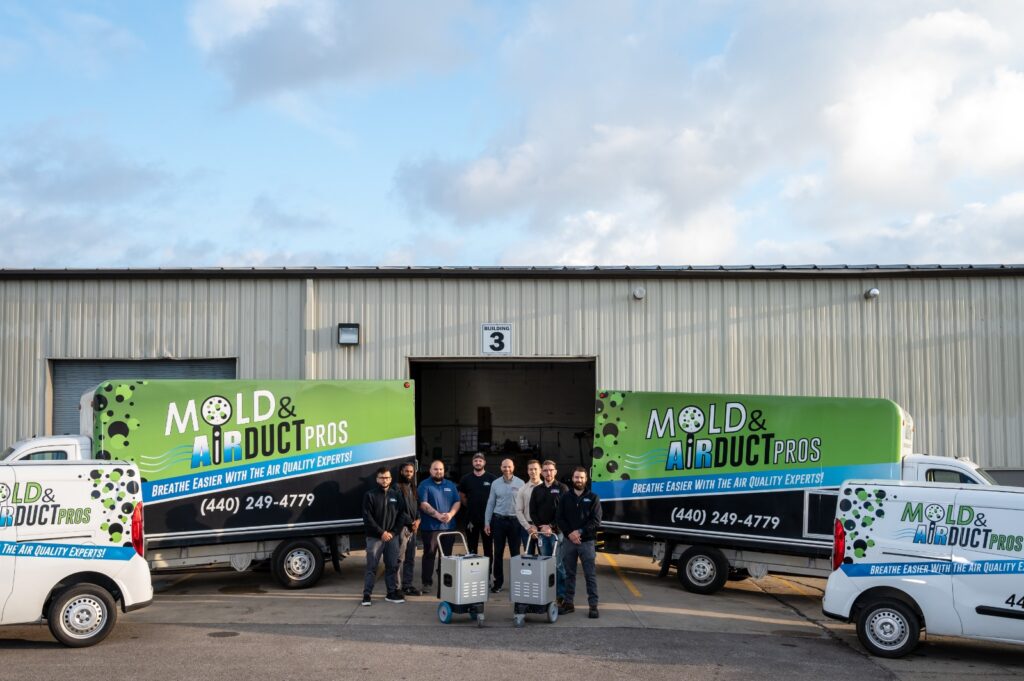
The process of professional air duct cleaning
The first step is a comprehensive inspection of the entire duct system. Trained technicians assess the condition of the ducts; they identify any issues such as mold growth, leaks, or visible contaminants. Once the inspection is complete, the cleaning process begins with the use of specialized tools.
High-powered vacuums, equipped with various attachments, are inserted into the ductwork. These vacuums create negative pressure, effectively sucking out accumulated dust, debris, and contaminants. To dislodge stubborn particles, technicians may use brushes or air whips. This step ensures a more complete removal of contaminants from all surfaces of the ducts.
In certain cases, technicians may use agitation devices or air snakes to break loose contaminants stuck to the duct walls. The final step involves a thorough cleaning of other HVAC components, such as coils and the blower fan. The meticulous approach of professional air duct cleaning ensures that the entire system is free from contaminants and running smoothly.
What next?
So, do you think it’s time to clean out your air ducts? If you are in the Cleveland area and your answer is “yes,” or even “I don’t know,” give us a call and we will get started on a plan together.

